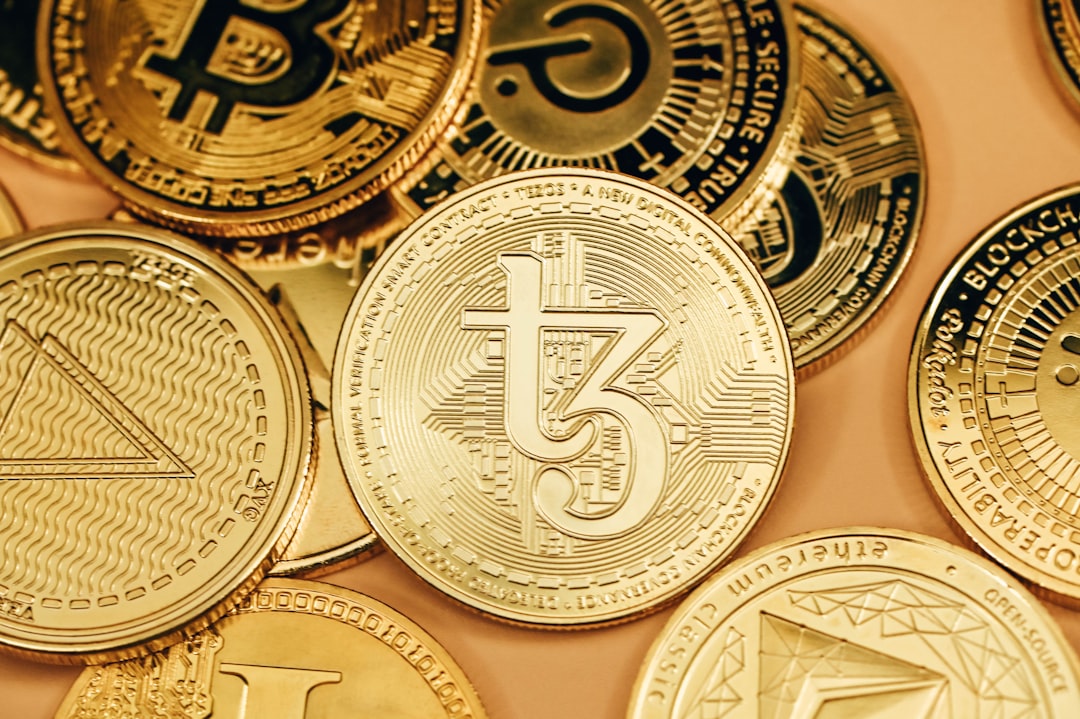Unlocking Steady Crypto Dividends with Dividend Paying Tokens

The world of cryptocurrency has evolved far beyond simple speculation, and one of the most intriguing avenues for passive income today is earning steady dividends from tokenized assets. These dividend‑paying tokens allow holders to receive regular payouts, similar to traditional stock dividends, but within a digital, decentralized ecosystem. For anyone looking to diversify their crypto portfolio or generate a predictable cash flow, understanding how these tokens work and which projects offer reliable distributions is essential.
Understanding Dividend Paying Tokens
Dividend paying tokens are smart‑contract based digital assets that generate income for holders through mechanisms such as revenue sharing, staking rewards, or profit‑distribution from a company’s earnings. Unlike simple utility tokens, these tokens provide an explicit monetary return, usually expressed in the token’s own denomination or in a stablecoin. The core idea is that the token’s value is tied not only to market sentiment but also to a tangible stream of cash or crypto that flows to investors on a periodic basis.
These tokens can be found across various blockchain ecosystems, from Ethereum’s ERC‑20 and ERC‑721 standards to newer chains like Solana, Polygon, or Avalanche. The smart contract code is designed to automatically allocate a portion of revenue to token holders, ensuring that the distribution process remains transparent and tamper‑proof. Because these payouts are programmable, they can occur daily, weekly, monthly, or quarterly, depending on the project’s business model.

How Dividends Work in Crypto
The mechanics of dividend payouts in the crypto realm are relatively straightforward. When a project generates profit through transaction fees, NFT sales, content monetization, or platform usage it records the earnings on its smart contract. A predefined percentage of those profits is then earmarked for token holders. The contract distributes the funds proportionally based on the number of tokens each holder possesses, often via automated or manual calls to a “payout” function.
The distribution process is fully auditable on the blockchain. Anyone can inspect the contract’s code, verify the payout schedule, and confirm that the payouts are performed as promised. Some projects even release “proof of distribution” statements, showing the exact amounts sent to each wallet during a given period. This level of transparency helps mitigate concerns about fraudulent or delayed payouts, a common worry in traditional dividend investments.
It is important to recognize that dividends in crypto can be paid in the token itself or in a more stable asset. Some projects opt to issue dividends in stablecoins like USDC or USDT to reduce volatility exposure for investors. Others issue dividends in the same token, creating a compounding effect that can accelerate the token’s growth over time. The choice between these methods depends on the project’s objectives and the preferences of its community.
Popular Dividend Tokens to Watch
A number of well‑known projects have gained traction for their robust dividend mechanisms. Below are a few standout examples that demonstrate diverse use cases and payout structures.
-
ShibaSwap’s SHIB & SPIKE – This decentralized exchange built around the Shiba Inu ecosystem offers a staking pool where users can earn SPICE tokens that are later distributed to SHIB holders. The dividends are paid in SPICE, which can be traded or held for appreciation.
-
Harvest Finance’s HFY – Harvest Finance is a yield‑aggregator that distributes weekly dividends in its native token, HFY. The payouts are derived from the interest earned on users’ deposited liquidity, creating a transparent and predictable income stream.
-
Rari Capital’s RGT – Rari’s governance token RGT receives monthly distributions that are tied to the platform’s revenue generated from leveraged yield farming strategies. These distributions are made in RGT, incentivizing long‑term holding.
-
Alpaca Finance’s ALPACA – Alpaca’s yield‑boosting protocol pays out dividends in ALPACA tokens, with the payout amount determined by the protocol’s interest earnings. ALPACA also offers a “rebasing” mechanism that automatically adjusts supply to maintain value stability.
-
Lido’s stETH – While not a traditional dividend token, Lido’s stETH represents staked Ether and yields rewards proportionate to the underlying validator’s performance. Holders receive a passive income in the form of compounded staking rewards, effectively acting as a dividend stream.
Each of these tokens has its own risk profile, governance structure, and community engagement level. Investors should conduct due diligence to understand the revenue sources, the sustainability of the payout model, and the underlying smart contract’s security.

Risk Management and Best Practices
Earning passive income from crypto dividends can be enticing, but it also carries unique risks that investors must navigate carefully.
-
Smart Contract Vulnerabilities – Even well‑audited contracts can contain hidden bugs. It is crucial to review audit reports, verify the number of independent auditors, and check for community feedback on any reported issues. Engaging with token holders’ communities can provide insights into past incidents or upgrades.
-
Regulatory Uncertainty – Dividend‑paying tokens often sit in a gray area between securities and commodities. Changes in regulatory stances could affect the tax treatment or legality of receiving dividends, especially in jurisdictions with strict securities laws. Consulting a legal expert familiar with crypto regulation can help mitigate these risks.
-
Revenue Volatility – Some projects rely on unpredictable revenue streams such as NFT sales or trading fees. During market downturns, these incomes may shrink, reducing or halting dividends. Diversifying across multiple dividend tokens can lower exposure to any single project’s performance.
-
Token Volatility – Even if a token pays a steady dividend, its market price can fluctuate wildly. A token’s valuation may drop sharply due to sentiment shifts, technical issues, or macroeconomic factors, potentially eroding the overall value of the dividend income.
-
Liquidity Constraints – If a token has low liquidity, selling it to convert dividends into fiat or other assets may be difficult or costly. Investors should monitor trading volume and liquidity pools before committing to a dividend strategy.
Best Practices include setting aside a portion of your holdings in a stablecoin to lock in dividend gains, using multi‑signature wallets for smart contract interactions, and regularly checking project updates for changes to payout schedules or governance decisions. Building a diversified portfolio of dividend tokens across different chains and use cases can help balance risk while maximizing passive income potential.
The Future of Crypto Dividends
The concept of dividend‑paying tokens is still nascent but rapidly expanding. As blockchain projects mature, we expect to see a broader range of financial instruments that blend traditional dividend models with decentralized governance. One emerging trend is the integration of token‑burn mechanisms alongside dividends, where a portion of payouts is permanently removed from circulation to counteract inflationary pressures and potentially increase the remaining token’s value.
Another frontier is the use of decentralized autonomous organizations (DAOs) to manage dividend distribution. DAO governance can allow token holders to vote on revenue allocation, ensuring that the community collectively determines the sustainability of payouts. This layer of participation aligns incentives across stakeholders and could foster more resilient and transparent distribution models.
Layer‑2 scaling solutions and cross‑chain interoperability are also poised to make dividend payments more efficient. With lower transaction costs and faster confirmation times, projects can distribute dividends more frequently without incurring significant network fees. This increased granularity could transform dividends from monthly or quarterly events into daily or even hourly streams, providing investors with near‑real‑time income.
Furthermore, as more traditional financial institutions explore blockchain, we may witness hybrid products that combine regulated securities with crypto dividends. These could bring institutional credibility and compliance frameworks to the space, potentially expanding the investor base beyond retail participants. The convergence of DeFi and traditional finance may lead to standardized dividend reporting, tax‑friendly structures, and increased liquidity, making crypto dividends a mainstream investment option.
In conclusion, dividend‑paying tokens offer a compelling way to generate passive income in the evolving cryptocurrency landscape. By understanding the mechanics, assessing risks, and staying informed about regulatory developments, investors can harness these digital assets to diversify portfolios and achieve steady returns. The next wave of innovation will likely make dividends even more accessible, transparent, and integrated into the broader financial ecosystem, paving the way for a new era of decentralized passive income.

Jay Green
I’m Jay, a crypto news editor diving deep into the blockchain world. I track trends, uncover stories, and simplify complex crypto movements. My goal is to make digital finance clear, engaging, and accessible for everyone following the future of money.
Discussion (10)
Join the Discussion
Your comment has been submitted for moderation.
Random Posts

Future-Focused Investing - Turning Objectives into Wealth
Turn vague dreams into wealth by setting SMART goals, defining exact amounts and timelines, then disciplined planning and investing that grows with you.
1 year ago

Beyond Short Term Fluctuations Crafting a Long Term Investment Roadmap
Ignore short term swings. Build a long term roadmap that ties your investments to life goals, turning volatility into an ally that steadily grows your wealth over time.
4 months ago

Diversification Strategies That Improve Risk Adjusted Returns
Learn how smart diversification, beyond simple spread, boosts Sharpe and Sortino ratios, protecting growth while smoothing volatility.
10 months ago

Smart NFT Strategies for Reliable Income and Tax Efficiency
Build a passive NFT portfolio with diverse assets, smart royalty management, and tax, aware structuring to turn tokens into reliable income while keeping taxes low.
1 week ago

Integrating Wallets with Staking Tools Step by Step
Learn how to connect your wallet to staking tools in clear, simple steps, update firmware, secure your seed, choose a trusted platform, and start earning rewards safely.
1 month ago
Latest Posts

Tax Strategies for Long Term Passive Earnings
Learn how smart tax planning can boost your passive income: choose efficient vehicles, use shelters, time gains, and keep more of what you earn.
1 day ago

Passive Income Education Through Legal, Tax, and Risk Management
Turn a side hustle into lasting, hands, off wealth by mastering legal structure, tax strategy, and risk protection, the three pillars that safeguard capital and ensure steady dividends.
1 day ago

Crypto Exchange Basics for Steady Income
Build steady crypto income by defining clear goals, choosing the right exchange tools, and sticking to a disciplined strategy for consistent returns.
2 days ago

